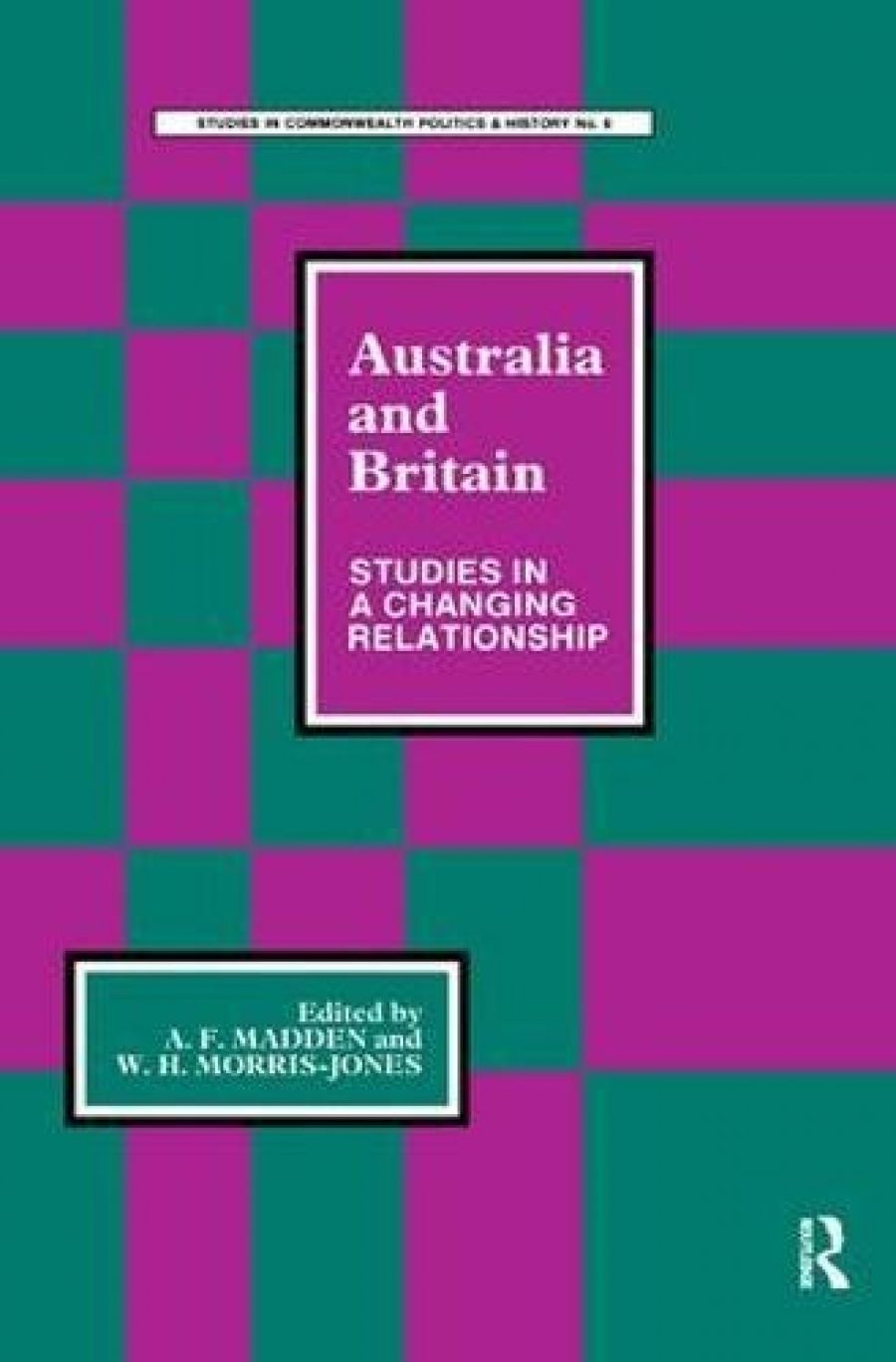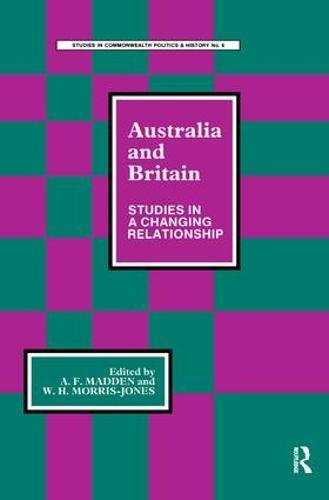
- Free Article: No
- Contents Category: Society
- Review Article: Yes
- Article Title: Australia and Britain
- Online Only: No
- Custom Highlight Text:
This book of a dozen essays, with a foreword by Sir Kenneth Weare (his last substantial piece of writing before he died), concentrates on various aspects of the changing Anglo-Australian relationship.
It is an enlightening collection, for most of the essays test and in some cases challenge the ‘conventional wisdom’ which pervades recent analyses of Australian life. This is especially useful to this reviewer who, as an immigrant of two years’ standing, discovered on arrival a veritable industry of writers in various disciplines all concerned with the search for an Australian identity. Two essays, for a start, provide the leaven in reassessment of George Johnston’s literary quest for ‘the way home’, as well as Donald Horne’s ‘Lucky Country’ theme and Alan Renouf’s ‘Frightened Country’ analysis. The first is interestingly dealt with by Alan Lawson in his ‘Acknowledging Colonialism: Revisions of the Australian Tradition’, which challenges several half-truths which have become maxims. Horne and Renouf immediately spring to mind in J.D.B. Miller’s ‘An Empire That Don’t Care What You Do’. This essay is a ‘must’ for those people who view most past (and some present) Australian leaders as supine in their dealings with British counterparts.
- Book 1 Title: Australia and Britain
- Book 1 Subtitle: Studies in a Changing Relationship
- Book 1 Biblio: Sydney University Press $15.00 pb, 195 pp
- Book 1 Cover Small (400 x 600):

- Book 1 Cover (800 x 1200):

P.G. Edwards’ essay on ‘The Rise and Fall of the High Commissioner: S. M. Bruce in London’ holds surprises on the same theme. The most erudite and most predictable contribution is by Sir Garfield Barwick on ‘Law and the Courts’ which concludes that in the realm of Australian law, there have been no general movements away from British concepts and practices.
J.O.N. Perkins in ‘Changing Economic Relations’ charts Britain’s dwindling trade ties with Australia during the post-World War II period. He points out that in capital flows and invisible transactions, nevertheless, trade between the two countries is still growing. One of the more entertaining essays is K.S. Inglis’ ‘The Imperial Connection: Telegraphic Communication Between England and Australia, 1872-1902’. The author demonstrates that while the new technology proved to be ‘a powerful agent of imperial unity’, often summoning the colonies to war, speed of communication did not necessarily improve the understanding of those using it. W.D. Borie’s ‘“British” Immigration to Australia’ reminds us that in the important recent waves of migrants to Australia, the British still constituted the largest single national group and that they outnumbered those from the United Kingdom in any comparable earlier period.
Amongst the remaining essays, T.B. Millar’s sound analysis is evident in his ‘Anglo-Australian Partnership in Defence of The Malaysian Area’. There are also contributions by W.F. Connell on ‘British Influence on Australian Education in the Twentieth Century’; R.S. Parker on ‘The Evolution of British Political Institutions. in Australia’; Francis West on ‘The Australian Expatriates: Gilbert and Hubert Murray’; and A.G.L. Shaw, ‘London and the Governors: Relations in Eastern Australia, 1825-45’.
Two points should be made: this work is of the highest academic standard; and if it had not been published, something similar would have been before too long.


Comments powered by CComment